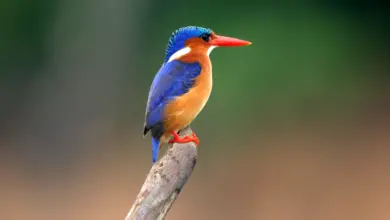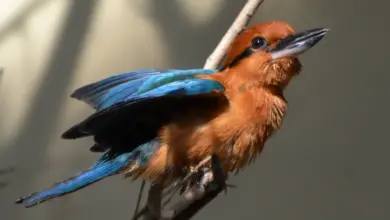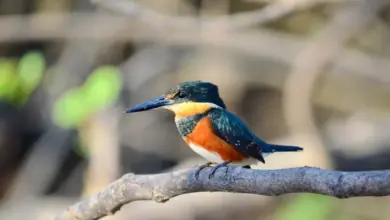The Stork-billed Kingfishers, Pelargopsis capensis (formerly Halcyon capensis), is a tree kingfisher which is widely but sparsely distributed in tropical south Asia from India and Sri Lanka to Indonesia. This kingfisher is essentially resident throughout its range.
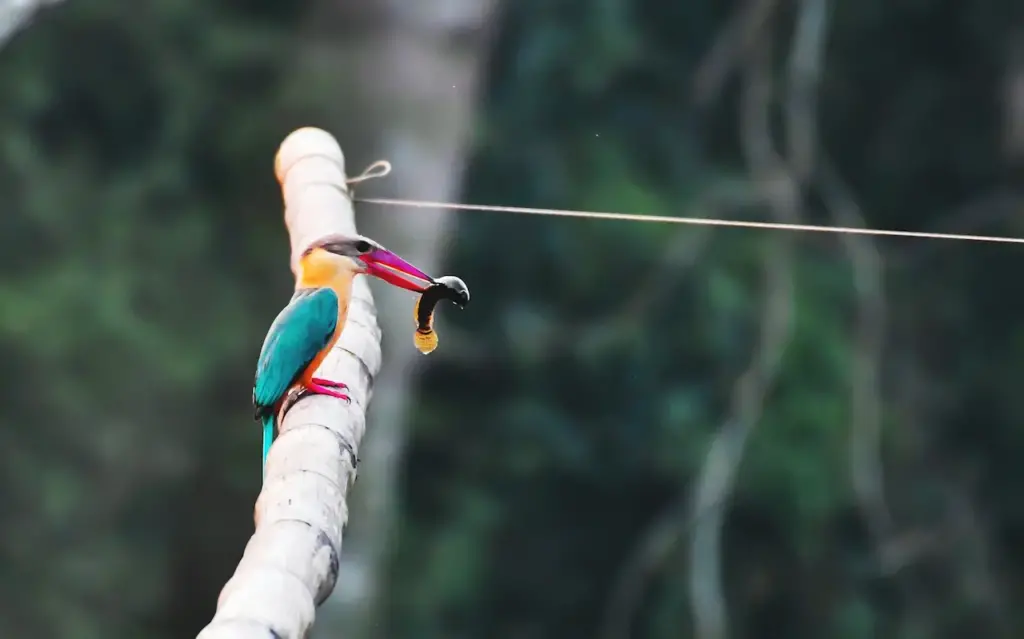
Stork-billed Kingfisher is a species of a variety of well-wooded habitats near lakes, rivers or coasts.
The average life span of the kingfisher is two years.
Description
This is a very large kingfisher, 35 cm in length.
The adult has a green back, blue wings and tail, and grey head. Its underparts and neck are buff. The very large bill and legs are bright red. The flight of the Stork-billed Kingfisher is laboured and flapping, but direct. Males and females look alike.
There are 15 races, mostly differing in plumage detail, but P. c. gigantea of the Sulu Islands has a white head, neck and underparts.
Calls / Vocalizations
The call of this noisy kingfisher is a low and far reaching peer-por-por repeated every 5 seconds or so as well cackling ke-ke-ke-ke-ke-ke.
Diet / Feeding
It perches quietly whilst seeking food, and is often inconspicuous despite its size. It is territorial and will chase away eagles and other large predators.
This species hunts frogs, crabs, rodents and young birds; but they are predominantly fish-eaters.
Like other kingfishers, it is able to hover above the water while searching for fish.
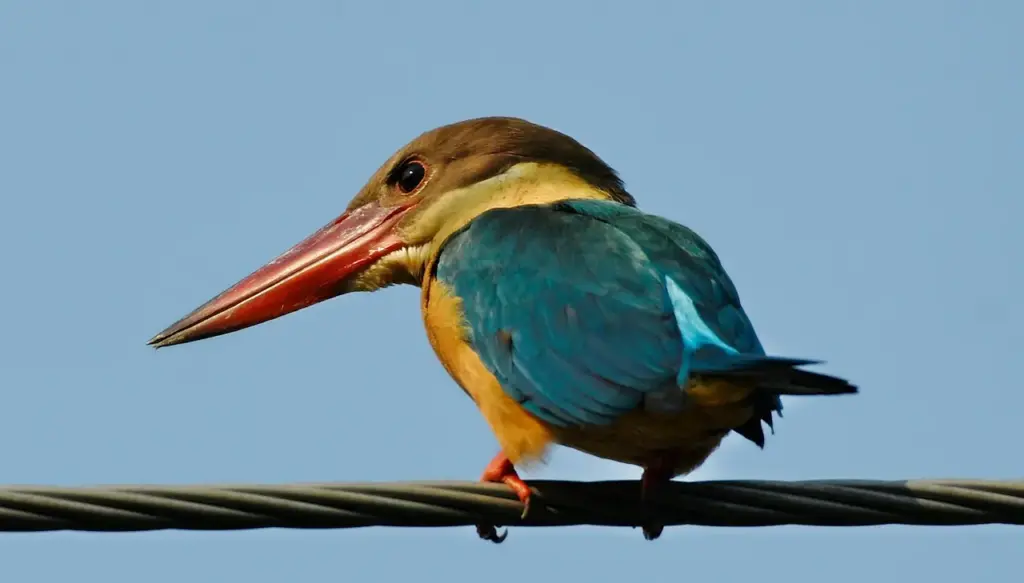
Their heavy body weight gives them enough power to swoop down fast on a fish thatt is close to the water surface.
* An average family of 6 kingfishers eat up to 100 fish a day!
Nesting / Breeding
Stork-billed Kingfishers digs its nest in a river bank, decaying tree, or a tree termite nest.
A clutch of two to five round white eggs is typical.
References
- BirdLife International (2004). Pelargopsis capensis. 2006. IUCN Red List of Threatened Species. IUCN 2006. Retrieved on 11 May 2006. Database entry includes justification for why this species is of least concern
- C H Fry and Kathie Fry; illustrated by Alan Harris (2000). Kingfishers, Bee-eaters and Rollers. Princeton University Press. ISBN 0691048797.

